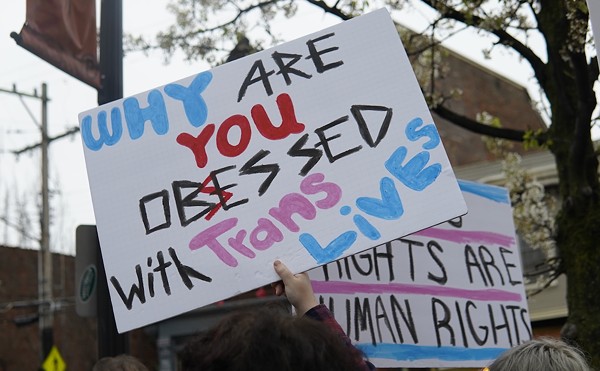Cincinnati City Council passed an ordinance Wednesday which seeks to help families facing eviction due to inability to pay rent.
The ordinance, submitted by council member Greg Landsman, will appropriate $227,000 from the Community and Economic Development Department’s non-personnel budget for a pilot program which aims to give one-time assistance to families who face eviction. Another $167,000 specific to the West End and related to the sale of city-owned land to a company moving for FC Cincinnati's stadium there will bring the total money for the program up to $403,000.
City Council passed the ordinance 6-1, with council member Amy Murray voting no. Murray found the initiative to be an unnecessary expense, citing aid through United Way to reduce homelessness and questioning the wisdom of starting a pilot program when the city has a $19 million budget deficit.
Landsman argued that this initiative is vital to building a healthy economy and will prove to be less expensive for the city in the long run.
“It’s much less expensive to keep people in their homes than to watch people lose their homes and the support needed in association with that,” he said. “The best way to grow an economy is to invest in people and talent. The more people who can participate in your economy, the more your economy is going to grow.”
Council member Tamaya Dennard echoed Landsman’s sentiment, saying, “If we’re serious about lifting people up, we have to be serious about housing.”
Now that the ordinance has passed, the city will be doing the work of choosing a social services agency to partner with. Landsman said agencies being considered include the Society of St. Vincent de Paul, Community Action Agency and Housing Opportunities Made Equal (HOME). What is most important is finding an agency with a proven track record, he said.
“There are several agencies who do this kind of work,” he said. “We don’t want to reinvent the wheel, we just want to partner with someone who can do this really well.”
St. Vincent de Paul has been doing this work for decades and in 2017 helped 2,000 Hamilton County residents with rent at a cost of $700,000, said Mike Dunn, executive director of Cincinnati’s Society of St. Vincent de Paul. Another $700,000 was used for utility assistance, he said.
The need for eviction prevention is huge, Dunn said, and while an extra $227,000 for the cause would be welcome aid, there will still be a great number of people who would be turned down. Just for St. Vincent de Paul's center at 1125 Bank St., 7,000 applications were turned down in 2017, said Mary Reid, director of social services.
“We try to see how our assistance will help them continue to be sustainable over the long term. We look at income, the situation, and weigh it against all the other requests,” Reid said. “We agonize over the ones that we’re not able to help because sometimes they’re not any different than the ones we did decide to help.”
The reason for eviction is most often the inability to pay, and Reid said the most common causes include car trouble, medical problems, pregnancies and prioritizing bills other than rent.
There were nearly 50,000 residential eviction filings in Hamilton County between 2014 and 2017, with 83.6 percent of the filings requesting a money judgment from the tenant, states a June 2018 study by Elaina Johns-Wolfe at the University of Cincinnati. The study also found that Hamilton County’s eviction rate was at 4.04 per 100 renter-occupied units, above the national average of 2.34.
A growing poverty rate and rising rent have not helped the situation. A February 2017 report by the Community Building Institute at Xavier University found the number of households in poverty in Hamilton County has risen 40 percent — from 41,587 to 58,046 — since 2000 and “overall, the availability and affordability of housing has not kept pace with the rise in poverty.”
The problem of poverty has become exacerbated by a 46 percent increase in median gross rent between 2000 and 2014, the report states. Income has not seemed to catch up with this increase, either, as the median income only grew by 19 percent in that same period. Black residents are among the hardest hit by the rising rent costs.
“Black Hamilton County households are disproportionately affected by housing cost burden, with nearly 49 percent experiencing some level of burden, compared to 34 percent of households overall,” the report states.
Overall, Cincinnati faces a roughly 30,000-unit gap when it comes to units of housing affordable for households making 30 percent of Hamilton County’s median income — about $14,678 a year — or less.
UC researcher Johns-Wolfe also found “renters’ likelihood of eviction increases with their number of children, regardless of socioeconomic status, race, or rental payment period.”
“This is likely due to landlords’ view that children put added stress on property, or might disturb neighbors,” Johns-Wolfe writes.
Keeping these children in their homes is precisely the reason Landsman has shown such interest in the pilot program.
“Our focus has been from the beginning and will always be on making life infinitely better for our children and families, particularly those who are marginalized, and this is a big step in that direction,” he said.
The Hamilton County Human Services Chamber has recommended that $100,000 of the pilot program's money go to legal counsel for tenants facing eviction.
"A recent study by the University of Cincinnati showed that 88 percent of landlords in eviction court cases have legal representation, whereas only 3 percent of tenants do. Without access to legal counsel, tenants are unlikely to prevail in court," a memo from the chamber to City Council reads.
The chamber also recommends allowing families one-time access to as much as $2,000 in eviction prevention aid.
"Though many families will benefit from lower levels of assistance, clients who are represented in eviction court often need higher amounts to cover back-rent and late fees," the memo reads. "We believe this cap level will provide maximum flexibility and better outcomes."
These neighborhoods had the most evictions in 2016, according to national data collection effort Eviction Lab, run by Princeton University sociologist Matthew Desmond.
• Census Tract 93 (East Price Hill) — 13.15 percent eviction rate, 98 evictions
• Census Tract 28 (Camp Washington) — 12.71 percent eviction rate, 52 evictions
• Census Tract 85.0 (Mount Airy) — 12.47 percent eviction rate,150 evictions
• Census Tract 100.02 (Westwood and East Westwood) — 12.21 percent eviction rate, 227 evictions
• Census Tract 103 (Sedamsville) — 11.8 percent eviction rate, 36 evictions
• Census Tract 94 (East Price Hill) — 11.47 percent eviction rate, 46 evictions
• Census Tract 98 (West Price Hill) — 10.77 percent eviction rate, 66 evictions
• Census Tract 95 (East Price Hill) — 9.74 percent eviction rate, 57 evictions
• Census Tract 272.0 (Lower Price Hill/Queensgate) — 10.14 percent eviction rate, 67 evictions
• Census Tract 267.0 (Walnut Hills) — 8.78 percent eviction rate, 48 evictions
• Census Tract 263.0 (Queensgate/Lower Price Hill) — 8.6 percent eviction rate, 24 evictions
• Census Tract 69 (Avondale) — 8.42 percent eviction rate, 76 evictions
• Census Tract 269.0 (West End) — 8.11 percent eviction rate, 79 evictions
• Census Tract 97 (West Price Hill) — 8.05 percent eviction rate, 103 evictions






